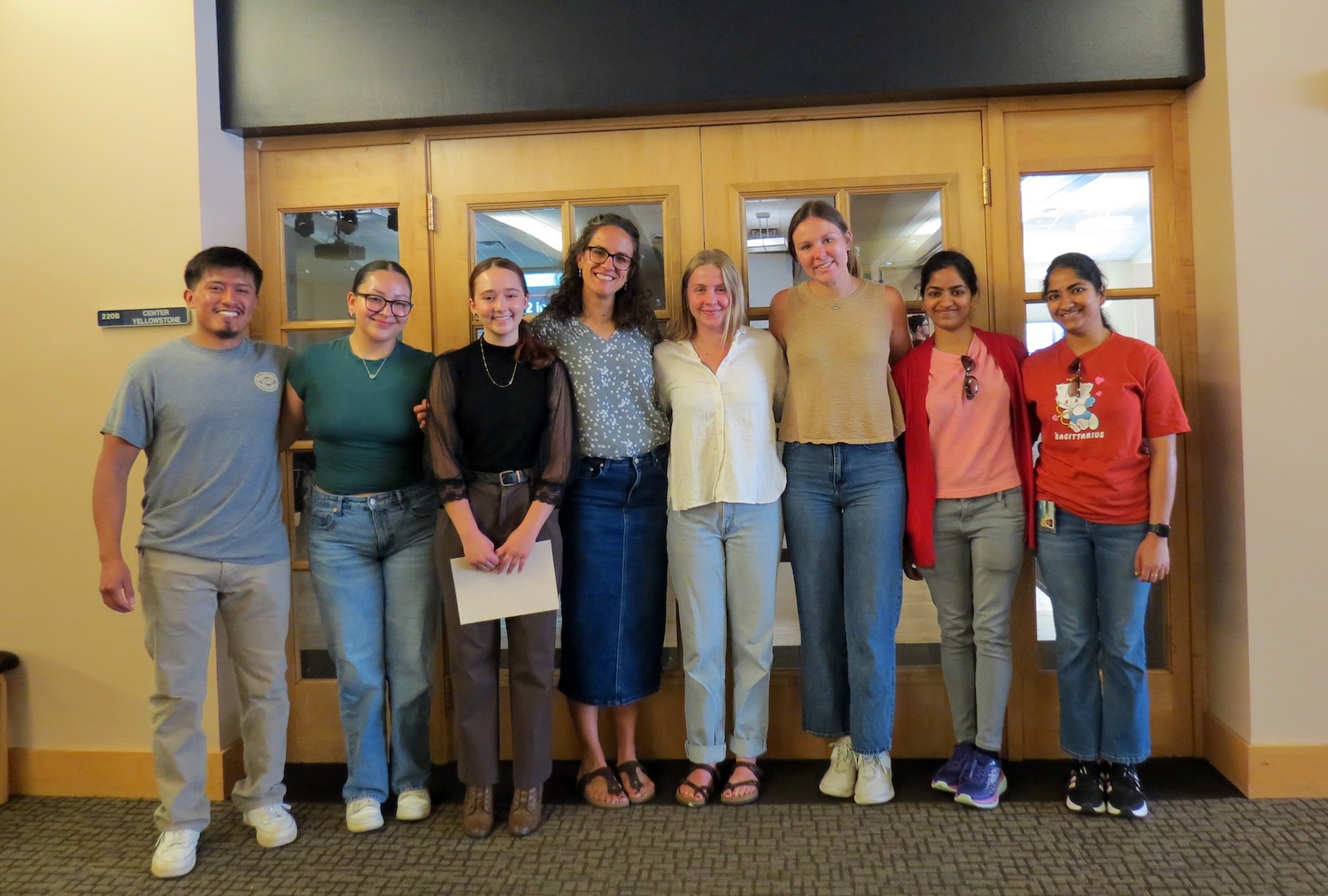UW Researcher Receives Grant to Study How Muscles Respond to Low Oxygen
By SVI Staff
September 6, 2025

Photo caption: Danielle Bruns with members of her lab, summer 2025. From left to right, Jose Campos, Angelique Luna, Jaden Campbell, Bruns, Marjie Schmitt, Olivia Ballew, Sharanya Satyanarayana, and Sushumna Satyanarayana. Photo courtesy of Danielle Bruns.
Danielle “Nellie” Bruns, an associate professor in the University of Wyoming’s Department of Zoology and Physiology, has received a five-year $1.78 million research grant from the National Institutes of Health (NIH) for a project investigating
how muscles cope with low amounts of oxygen.
“Almost all cells and organisms have ways to respond to low oxygen because it’s so important for survival to be able to do so,” says Bruns. But researchers have very little understanding of the molecular mechanisms behind how muscles respond to oxygen scarcity, or hypoxia.
Although every organism must find some way to cope with hypoxia, even within a single organism, different muscles respond to hypoxia in distinct ways.
Humans have two kinds of muscles: smooth and striated. Bruns and her team are focused on striated muscles, which are more structured than smooth muscles.
The human body is composed of three kinds of striated muscles: skeletal muscles, right ventricle cardiac muscles (RV) and left ventricle cardiac muscles (LV). Skeletal muscles move the arms, abdominals and even tongue. Most muscles that can be consciously controlled are skeletal muscles. In the heart, the RV pumps de-oxygenated blood to the lungs to become oxygenated,
while the LV pumps oxygenated blood to the rest of the body.
“The crux of our funded work is that when the three striated muscles are exposed to hypoxia, the skeletal muscle gets smaller (atrophy), the RV gets larger (hypertrophy) and the LV does nothing,” explains Bruns. “So we’re asking the basic question — how is it that in the same animal, these three different things can happen at the same time?”
Bruns will study the physiology of how each kind of muscle responds on its own. She will also investigate how heart muscles and skeletal muscles collectively work together to cope with hypoxia.
“It’s highly likely that tissues, muscles and cells within the body communicate with one another to respond to stress, including during hypoxia,” she comments. But researchers currently have almost no understanding of how muscles work together during hypoxia.
Many conditions, like cancer, lung disease or cardiovascular disease, can cause hypoxia. Traveling to high altitudes can also result in hypoxia. Bruns’ study may help researchers find new ways to deal with the consequences of low oxygen. The research could also lead to improved treatments for diseases that can cause hypoxia.
The grant, awarded from NIH’s National Institute of General Medical Sciences (NIGMS), began Sept. 1, 2025, and continues through July 31, 2030. For more information, contact Bruns at dbruns1@uwyo.edu or (307) 766-5290.

